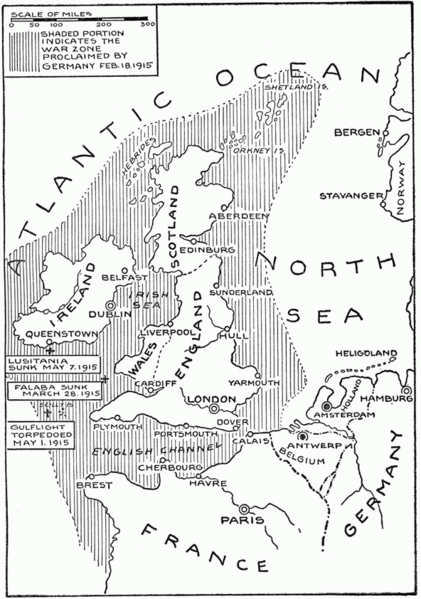“House Rules” changes or additions to Axis & Allies: 1914
To better balance play between the Allies and the Central Powers, to improve historical accuracy, and to add a new Irish rebellion option. This is how I will play A&A 1914 henceforth, chez moi.
Germany Set Up
Add a German Cruiser and Transport to Sea Zone 24 and a German Cruiser in Sea Zone 26.
The Germans had a respectable navy operating in the South Atlantic and in the Pacific in 1914 and there were running sea battles between German and British flotillas during this time in these regions. The game should reflect this, and it also adds a necessary element of tension in what is otherwise a complete sideshow (Africa) where the UK and France are not challenged at all.
Movement: ENTRAIN
Once a turn, before resolving combat, a player may move any number of pieces from one single space directly along a path of contiguous spaces to his capital, as long as the capital is uncontested and the route is not blocked by hostile or contested territory. Any sea spaces involved also must be free of all enemy naval units and also contain at least one friendly Transport ship. This movement must end in the capital; units may not stop elsewhere en route.
This reflects nations’ abilities to transfer troops rapidly along a rail system from front to front, as happened regularly during the war, particularly for the Germans for their big 1918 offensive after their Eastern Front stabilized; the current game, with its slow movement rates, makes this impossible.
Submarine Sneak Attack
Submarines always have a “first shot” ability when attacking or defending and then the option to submerge after any round of combat. Submarines as defenders only hit on a roll of 1. Hits by submarines are inflicted before returning fire. Submarine versus submarine combat is considered simultaneous, as per normal combat.
Similar concept to “regular” A&A (WWII). I don’t know why the 1914 game doesn’t allow for “sneak attacks.” It was even harder to detect or avoid enemy subs in WWI than WWII. And Germany badly needs this equalizer.
Swiss Mobilization
If Switzerland’s neutrality is violated, it mobilizes 6 units (1 artillery and 5 infantry) hostile to the invaders. Switzerland’s IPC value remains at 1.
Switzerland preserved its neutrality through two world wars by deterring attackers who would have faced a nation fully in arms and prepared to resist from many mountain strongholds and fortresses. The Swiss should be much harder to subdue than this game provides and a special rule is in order, especially given the game board’s layout that makes Switzerland an overly tempting target out of proportion to to geography.
Russian Revolution
The Russian revolution rule is always in effect, not merely an optional rule. If the Revolution occurs, Russian IPCs are returned to the bank, not awarded to a player, but the Central Powers DO get credit for “capturing” a capital (Moscow).
The Revolution knocks Russia out of the war and it’s silly to punish the Central Powers by denying them credit for this.
Revolt in Ireland
No non-British Allied land or air units are permitted in Ireland. The German player may invest a total of 3 IPCs during each Purchase Units phase in hopes of fomenting an Irish rebellion – similar to the technology tables in early edition A&A, 3 IPCs spent buys ONE immediate die roll THAT TURN only (i.e., the spent IPCs are not retained or carried over to succeeding turns). Having any German ship adjacent to Ireland at this time provides a +1 to the die roll for this check. If a modified roll of 6 is rolled on a die, Irish nationalist republicans revolt. Irish rebellion is also automatically triggered by any German land unit present in Ireland at the end of a German turn.+
If Ireland rebels, immediately place two infantry figures in Ireland under the control of the German player; these represent Irish rebel forces hostile to Great Britain. If Great Britain loses control of Ireland or Ireland is contested, at the start of each British player Purchase Units phase the British player forfeits as many IPCs as there are enemy units in Ireland directly to the German player, up to a maximum of 8. If Great Britain loses control of Ireland and Ireland is not contested Ireland becomes controlled by Germany and Germany receives its IPC value. At the start of each German turn that Ireland is controlled by Germany or contested, another Irish rebel infantry figure is placed in Ireland, up to a maximum of four rebel infantry units. Only infantry units are raised as Irish rebel units but there is no limit to other nation’s units that can be moved to Ireland. Irish rebel units may not leave Ireland. Ireland will only revolt once in a game.
This rule simulates the complicated political situation existing in Ireland during WWI and the historical “Easter Uprising” of 1916. Because German submarines were often used to smuggle weapons and personnel to Ireland during this time, and German invasion prospects encouraged the Fenians, the presence of German naval units increases the chances of rebellion. The USA and France traditionally sympathized with Irish republicanism and their governments were not likely to agree to their militaries forsaking the war against Germany to suppress Irish nationalism.








